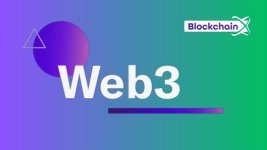K
kishoresenthil
Member
- PG Coin
- 4,816
Web 3.0 is a decentralized, intelligent, and interoperable web that aims to provide a more seamless and personalized user experience.
Web 3.0 is characterized by several key features, including:
Decentralization: Web 3.0 utilizes blockchain technology and decentralized protocols to eliminate the need for intermediaries and create a more secure and transparent online environment.
Interoperability: Web 3.0 enables different platforms and applications to interact with each other seamlessly, allowing for more efficient and personalized data exchange.
Artificial Intelligence: Web 3.0 leverages AI and machine learning to analyze vast amounts of data and provide more personalized and relevant content to users.
Personalization: Web 3.0 is designed to provide a more personalized user experience by understanding user behavior and preferences.
Immersive Experience: Web 3.0 aims to create a more immersive online experience by integrating virtual and augmented reality technologies.
Overall, Web 3.0 aims to create a more intelligent, user-centric, and decentralized web that allows for more secure, efficient, and personalized data exchange.

As an AI language model, I do not have the ability to predict the future, but I can provide some potential Web 3.0 trends based on current developments and industry experts' opinions:
Blockchain adoption: Blockchain technology will continue to play a vital role in the Web 3.0 ecosystem. Its decentralized and transparent nature makes it an attractive solution for data storage and management, digital identity verification, and secure transactions.
NFTs and Metaverse: Non-fungible tokens (NFTs) have become increasingly popular in the digital art market, metaverse development company and their use cases are expanding to other areas, such as gaming and virtual real estate. The development of metaverse platforms, where users can interact with each other in a virtual world, will likely lead to more NFT adoption and usage.
Decentralized finance (DeFi): DeFi has gained significant traction in recent years, allowing for peer-to-peer financial transactions without intermediaries. This trend is likely to continue, with more decentralized exchanges, lending platforms, and stablecoins emerging.
AI and Machine Learning: Artificial intelligence (AI) and machine learning (ML) are expected to play a more significant role in the Web 3.0 ecosystem, helping to improve data analysis, personalization, and automation.
Privacy and Security: With the increasing concerns over data privacy and security, Web 3.0 technologies will likely focus on providing more secure and private solutions, such as decentralized storage, encryption, and zero-knowledge proof.
These are just a few potential trends for Web 3.0 in 2023, and it is essential to note that the Web 3.0 ecosystem is still in its early stages, and new developments can emerge at any time.
Web 3.0 is characterized by several key features, including:
Decentralization: Web 3.0 utilizes blockchain technology and decentralized protocols to eliminate the need for intermediaries and create a more secure and transparent online environment.
Interoperability: Web 3.0 enables different platforms and applications to interact with each other seamlessly, allowing for more efficient and personalized data exchange.
Artificial Intelligence: Web 3.0 leverages AI and machine learning to analyze vast amounts of data and provide more personalized and relevant content to users.
Personalization: Web 3.0 is designed to provide a more personalized user experience by understanding user behavior and preferences.
Immersive Experience: Web 3.0 aims to create a more immersive online experience by integrating virtual and augmented reality technologies.
Overall, Web 3.0 aims to create a more intelligent, user-centric, and decentralized web that allows for more secure, efficient, and personalized data exchange.

As an AI language model, I do not have the ability to predict the future, but I can provide some potential Web 3.0 trends based on current developments and industry experts' opinions:
Blockchain adoption: Blockchain technology will continue to play a vital role in the Web 3.0 ecosystem. Its decentralized and transparent nature makes it an attractive solution for data storage and management, digital identity verification, and secure transactions.
NFTs and Metaverse: Non-fungible tokens (NFTs) have become increasingly popular in the digital art market, metaverse development company and their use cases are expanding to other areas, such as gaming and virtual real estate. The development of metaverse platforms, where users can interact with each other in a virtual world, will likely lead to more NFT adoption and usage.
Decentralized finance (DeFi): DeFi has gained significant traction in recent years, allowing for peer-to-peer financial transactions without intermediaries. This trend is likely to continue, with more decentralized exchanges, lending platforms, and stablecoins emerging.
AI and Machine Learning: Artificial intelligence (AI) and machine learning (ML) are expected to play a more significant role in the Web 3.0 ecosystem, helping to improve data analysis, personalization, and automation.
Privacy and Security: With the increasing concerns over data privacy and security, Web 3.0 technologies will likely focus on providing more secure and private solutions, such as decentralized storage, encryption, and zero-knowledge proof.
These are just a few potential trends for Web 3.0 in 2023, and it is essential to note that the Web 3.0 ecosystem is still in its early stages, and new developments can emerge at any time.
